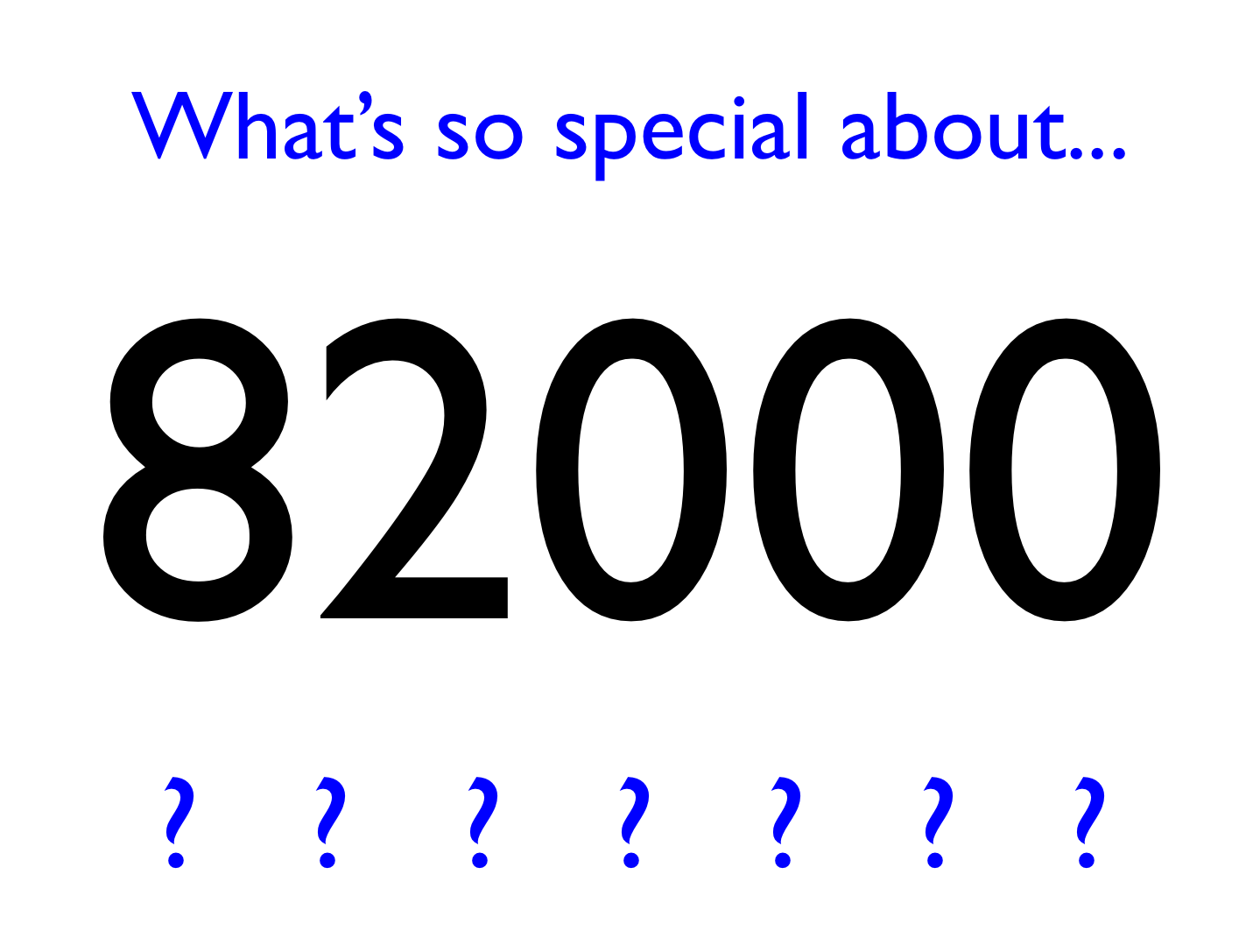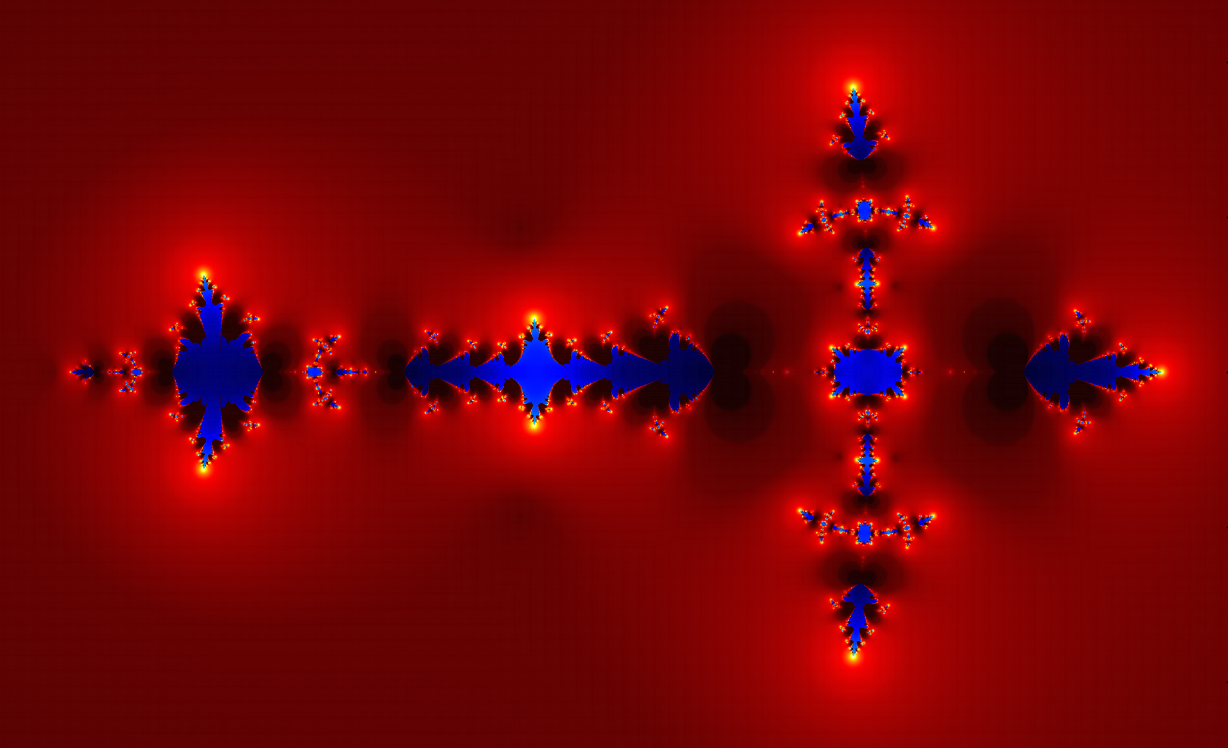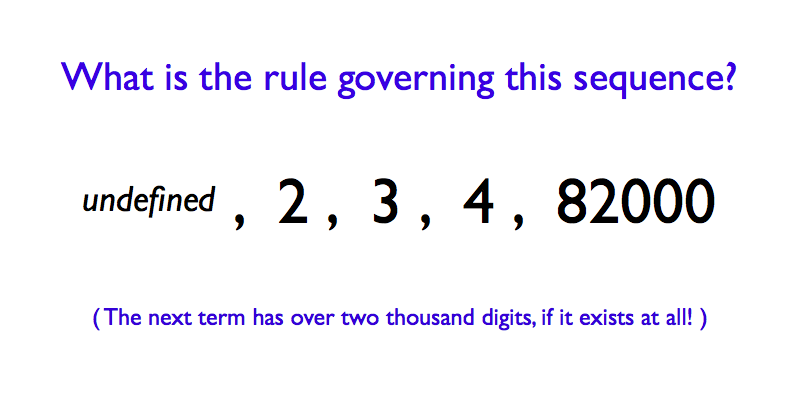 .
.
The 82000 sequence that I posted the other day seems to have caught the imagination in a few quarters. Continue reading
Monthly Archives: May 2015
Spurious Spider Sums
Any suggestions? Need to put brackets in to this true. Pls help! @mathsjem @solvemymaths @hegartymaths pic.twitter.com/LOdAAYOYqE
— Japleen Kaur (@japleen_kaur1) May 14, 2015
Any ideas…? Continue reading
Fractal Factorials!!!
UPDATE: See the bottom of this post for new, higher definition, full-colour fractals!
While messing around with factorials, I stumbled across some unexpected and elegant fractal images.
Diabolical Digits
The other day, I did a mini-investigation into an interesting maths tweet from Cliff Pickover. Here’s another:
Scream! The string 79873884 1st occurs in Pi at position 79873884, counting from 1st digit after the decimal point. pic.twitter.com/kcASDJSV1A
— Cliff Pickover (@pickover) April 21, 2015
This fact is beautiful, but is it surprising?
Political Pi
The seat totals of the four largest political parties at the general election (excluding Northern Ireland and the speaker), 330, 232, 56, 8, appear in sequence, starting from the eighty-eight million, five hundred and eight thousand, three hundred and seventy-ninth digit of π, counting after the decimal point.
To think that the election result was staring us in the face all the time. If only we had known where to look, we could have saved ourselves all that bother with the polls…
(Actually, √2 is even more helpful, giving us the DUP seat total as well. 330, 232, 56, 8, 8 appear in sequence, starting from the one billion, forty million, one hundred and thirty-two thousand, five hundred and seventy-third digit of √2, counting after the decimal point.)
Search for other numbers hidden in mathematical constants here.
Where it went wrong for the “Anti-Tory Majority”
Just before the UK general election last week, using the probabilities of victory for each party in each seat calculated by electionforecast.co.uk, I posted a set of PDFs for keeping track of the separate battles that would define the contest. The focus was on whether the various left-leaning parties (Labour, SNP, Plaid Cymru, Green, SDLP, plus a couple of independents) across the UK could build a so-called “Anti-Tory Majority”, gaining the 323 seats necessary* to vote down a Conservative Queen’s Speech and thus prevent David Cameron from continuing as Prime Minister, in a widely predicted hung parliament scenario.
Using the probabilities from Election Forecast, I identified the 131 most likely seats that the left-bloc could win in Great Britain (actually 132, since the 131st and 132nd seats on the list were judged to be equally likely wins), which, when added to 188 “safe” Labour seats in England and 4 likely seats for allies in Northern Ireland, would add up to the magic 323. The 131 target seats were highlighted on the PDFs (see below).
Things looked fairly good for the “Anti-Tory Alliance”, since they were favoured by Election Forecast in 137 of the seats that I listed, six more than they needed. However, on election night, the Conservatives far outperformed expectations, winning 331 seats: a parliamentary majority without needing the support of any other parties.
Where did things go wrong for them?
Election Night Battleground Info-Sheets
Planning to avidly follow the election results this evening? No? Oh…
Here is a seat-by-seat set of fact sheets for following each subcontest of the election, with 2010 results, predicted probabilities of victory for each party (taken from electionforecast.co.uk, updated after their final forecast) and any prominent candidates that I could think of. Continue reading
Solution to the sequence challenge.
Click HERE for the solution.



